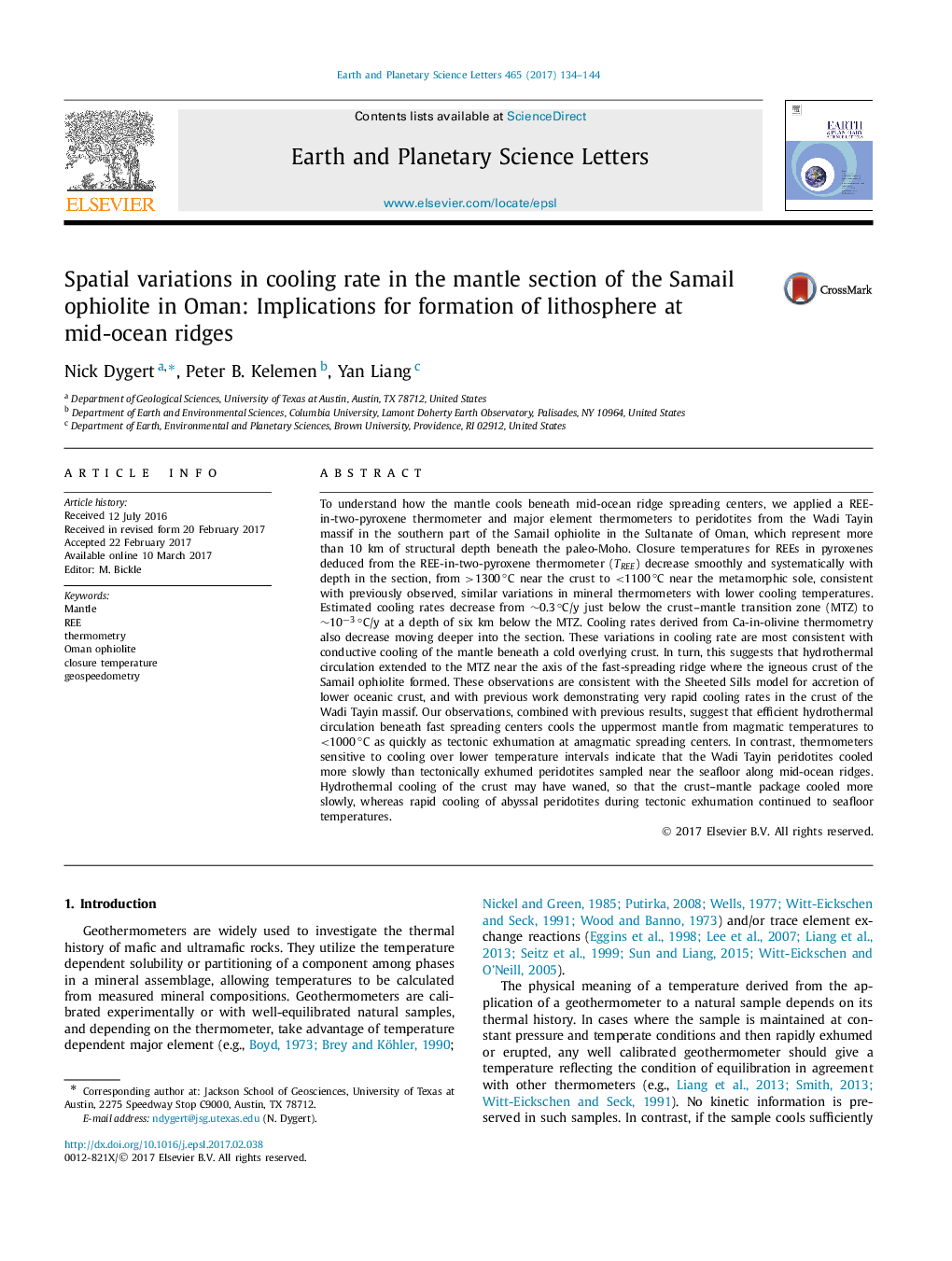| Article ID | Journal | Published Year | Pages | File Type |
|---|---|---|---|---|
| 5779986 | Earth and Planetary Science Letters | 2017 | 11 Pages |
â¢We applied a REE-in-two-pyroxene thermometer to peridotites from the Oman ophiolite.â¢Temperatures are â¼1300â°C near the Moho and decrease moving into the mantle section.â¢Spatial variations in cooling rate suggest conductive cooling of the mantle.â¢Efficient hydrothermal circulation in the crust quenched the uppermost mantle.â¢The observations are consistent with the Sheeted Sills model for crustal accretion.
To understand how the mantle cools beneath mid-ocean ridge spreading centers, we applied a REE-in-two-pyroxene thermometer and major element thermometers to peridotites from the Wadi Tayin massif in the southern part of the Samail ophiolite in the Sultanate of Oman, which represent more than 10 km of structural depth beneath the paleo-Moho. Closure temperatures for REEs in pyroxenes deduced from the REE-in-two-pyroxene thermometer (TREE) decrease smoothly and systematically with depth in the section, from >1300â°C near the crust to <1100â°C near the metamorphic sole, consistent with previously observed, similar variations in mineral thermometers with lower cooling temperatures. Estimated cooling rates decrease from â¼0.3â°C/y just below the crust-mantle transition zone (MTZ) to â¼10â3â°C/y at a depth of six km below the MTZ. Cooling rates derived from Ca-in-olivine thermometry also decrease moving deeper into the section. These variations in cooling rate are most consistent with conductive cooling of the mantle beneath a cold overlying crust. In turn, this suggests that hydrothermal circulation extended to the MTZ near the axis of the fast-spreading ridge where the igneous crust of the Samail ophiolite formed. These observations are consistent with the Sheeted Sills model for accretion of lower oceanic crust, and with previous work demonstrating very rapid cooling rates in the crust of the Wadi Tayin massif. Our observations, combined with previous results, suggest that efficient hydrothermal circulation beneath fast spreading centers cools the uppermost mantle from magmatic temperatures to <1000â°C as quickly as tectonic exhumation at amagmatic spreading centers. In contrast, thermometers sensitive to cooling over lower temperature intervals indicate that the Wadi Tayin peridotites cooled more slowly than tectonically exhumed peridotites sampled near the seafloor along mid-ocean ridges. Hydrothermal cooling of the crust may have waned, so that the crust-mantle package cooled more slowly, whereas rapid cooling of abyssal peridotites during tectonic exhumation continued to seafloor temperatures.
